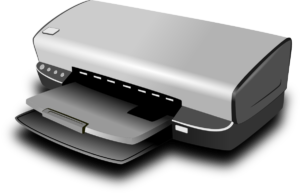Need to add a printer in Windows 10? In this article, I’ll show you the steps on how you can add or link a printer to your computer, whether that printer is brand spanking new, or an old one that you’ve had for years.
Add a Printer Automatically in Windows 10
Firstly, make sure your printer is turned on and connected to your computer. Next, follow the steps below to install the printer in Windows 10.
- Simultaneously press the Win + R key to open the Run dialog box.
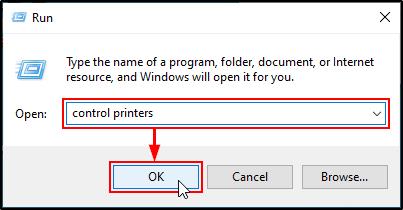
- In the Run dialog box, type the following command: control printers, and then click the OK button
- Next, click the Add a printer button.
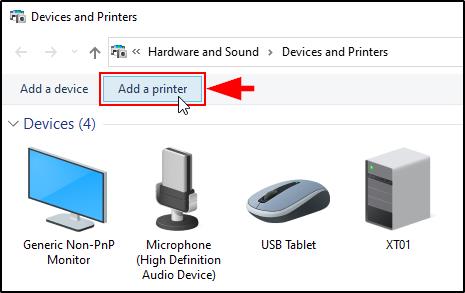
- Windows will scan for your plugged printers. Select your printer and then click Next.
- Windows will install a printer driver for the device. Once done, click the Finish button.
Tip: Click the Print a test page button to test your printer before clicking Finish. - Check if your new printer is added in the list of Devices and Printers.
Use an Older Printer with Windows 10
So, what if you end up getting a new computer, or you upgraded an existing computer to Windows 10, and you still want to use your old printer?
Manufacturers often don’t make new Windows 10 drivers for older printer models. To use an older printer in Windows 10, you start by following the Steps 1-3 above.
- When no printer is found, click the link The printer that I want isn’t listed link.

- Next, select the option My printer is a little older. Help me find it. And then click Next.
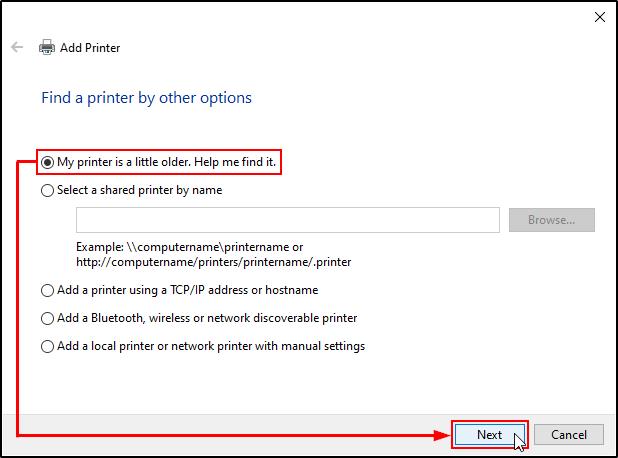
- Windows 10 will search for available printers and compatible drivers. Once found, select the compatible printer model, and click Next.
- Now type a name for the printer, and click Next.
- Skip the Printer Sharing option by clicking Next again.
- Use the Print a test page button to check if the printer is working, and then click Finish.
Add a Printer Manually in Windows 10
If both previous options did not enable you to install or connect your printer to Windows 10, you can try to install the printer manually.
Here are the steps to follow:
- Follow the previous instructions to click the link The printer that I want isn’t listed.
- Now select the option Add a local printer or network printer with manual settings, and click Next.
- The next step is to choose a printer port. Select the option Use an existing port (this is for a printer connected locally to your computer). In the drop-down list next to it, select the port. For a printer connected through a USB cable, select the USB option. For a printer connected with a parallel cable, select the LPT1 option. Then click Next.
- Next, click the Windows Update button. This will make sure Windows 10 checks the online repository for compatible drivers (Microsoft Update Catalog).

- Wait for Windows to finish scanning the devices and driver catalog. In the next windows, select the printer manufacturer and then the printer model.

Note: If the exact model for your printer is not listed, try selecting a model similar to your printer model. Or, if you have a driver disk for the printer, click the Have Disk option and select the INF file location for the printer driver. - Click Next.
- The final steps are the same as before. Type a name for the printer, skip the printer sharing option and print a test page.
- Click Finish.
Note: Is finding the right printer driver getting a bit too technical for you? No sweat. Download DriverFinder to find the EXACT printer driver your PC needs with just one click.
Install an Old Printer Driver in Windows 10, Using Compatibility Mode
If you have a driver installer for an older version of Windows for your printer, you can still try to use it with Windows 10. Just like some earlier Windows versions, Windows 10 has the ability to run programs in compatibility mode.
- Open a File Explorer window and browse to the driver installer file.
- Right-click the file and in the popup menu, select the option Troubleshoot compatibility.
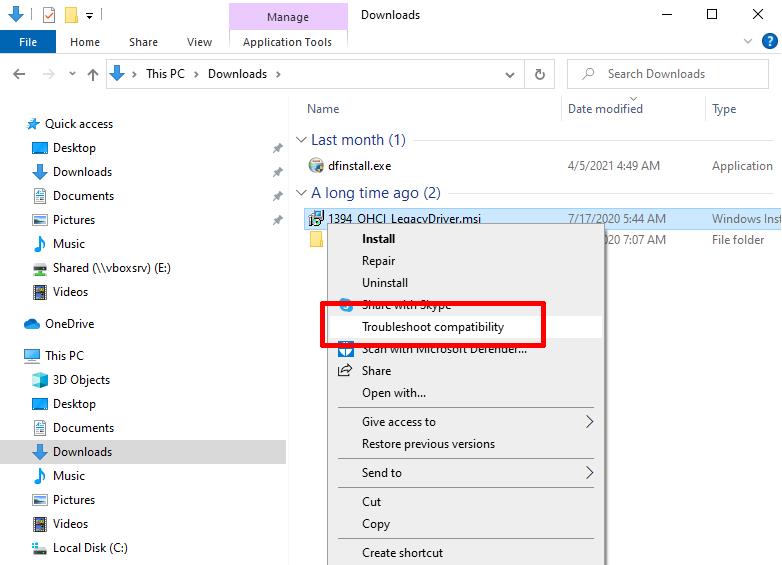
- Wait for the Program Compatibility Troubleshooter to analyze the file. Once complete, click Test the program to see if the installer will run under Windows 10.
- If the printer driver was installed by the program, you can select Next, and then click Yes, save the settings for this program.
- If the program failed, and the printer driver was not installed, click Next.
- Now click No, report the problem to Microsoft and check online for a solution.
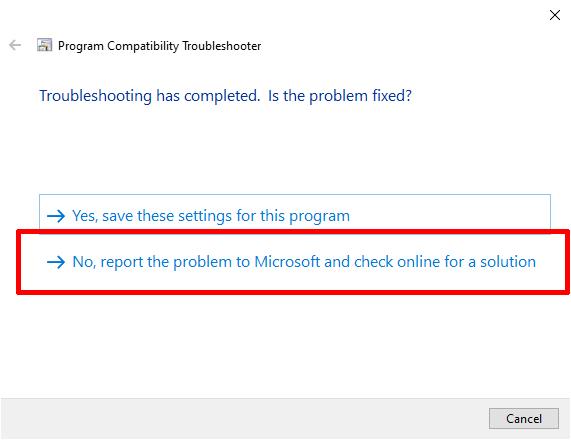
- If an online solution is available, you can try the option presented.
In many cases the online troubleshooter will not give you a viable solution for older printers. But if you know which version of Windows the installer is compatible with, you can manually set the Compatibility mode instead of letting Windows 10 analyze it.
- Simply right-click the driver installer program, and click Properties in the popup menu.
- In the properties dialog box, select the checkbox named Run this program in compatibility mode for:
- In the drop-down list below it, select the Windows version that you know the installer is compatible with.
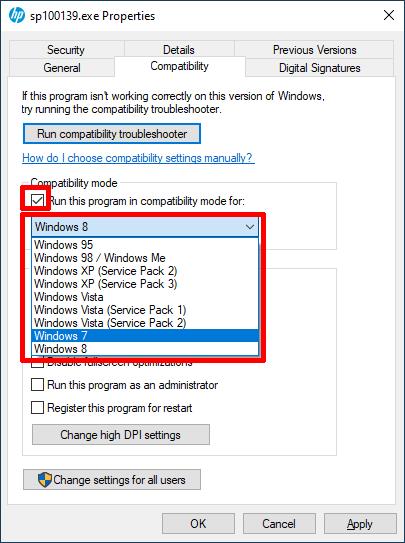
- Click OK.
- Now double-click the installer in the Explorer window to run it. The program will now be executed with compatibility settings for the selected Windows version.
Note: Some installers need to be executed with Administrator rights. So if, running the installer fails. Right-click the file, and in the the popup menu select Run as administrator. - Follow the instructions in the printer driver installer program to finish the printer installation.
The Printer is too old for Windows
It may turn out to be impossible to get your printer working on Windows 10 or Windows 11 because it is too old. In that case, there are only two real options.
The first option is to use a Virtual Machine solution (VMware or VirtualBox), install an older version of Windows, and install the printer software in that.
Using the virtual machine sharing options you can then access and use the printer in Windows 10 or Windows 11.
The second option is to use OpenPrinting with Linux. This is a lot more technical to implement, but it is a good option for older printers. For example, if the old Windows software for the printer is no longer available. Linux has better support for older hardware than the new Windows versions. This method uses the Windows Subsystem for Linux (WSL) to install a Linux distribution in Windows first.

